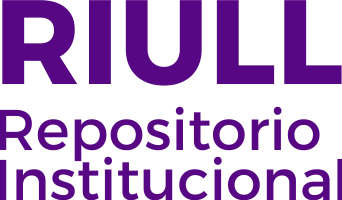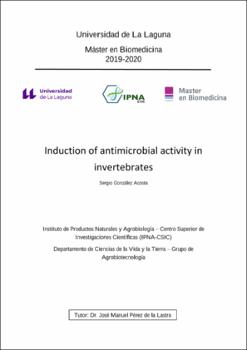Induction of antimicrobial activity in invertebrates
Author
González Acosta, SergioDate
2021Abstract
Using antimicrobial peptides (AMPs) as an alternative to
antimicrobials, has become an interesting approximation due the generation
of antimicrobial resistance by microorganisms, which currently leads to a
global health problem that will increase over time. Invertebrates represent a
rich niche for antimicrobial discovery due to their high diversity and the
presence of an adaptative immunity called “immune priming” described
during the last decades. However, the lack of a standard model in the priming
method makes studies on this field quite diverse. To carry out the induction
of antimicrobial activity in Tenebrio molitor, several priming methods
(septic injury and oral administration) were tested with different
immunogens (live and inactivated microorganisms) in order to optimize the
experimental design. Antimicrobial activity induction was demonstrated
with Escherichia coli through the screening assay, while the benefits of this
priming were not reflected in the survival assay. Due to the lack of
determining statistical significance, it is desirable to repeat the survival assay
with a larger sample size. Nevertheless, the fact that the methodology and
the demonstration of priming can be tested, means that this preliminary work
serves as a basis for future researches in this field. El uso de péptidos antimicrobianos (AMPs) como alternativa a los
antimicrobianos, se ha convertido en una aproximación interesante debido a
la generación de resistencia antimicrobiana por parte de los
microorganismos, lo que actualmente conlleva un problema de salud
mundial que aumentará con el tiempo. Los invertebrados representan un rico
nicho para el descubrimiento de antimicrobianos debido a su gran diversidad
y a la presencia de una inmunidad adaptativa llamada "immune priming”
descrita durante las últimas décadas, pero la falta de un modelo estándar en
- 4 -
el método de “priming” hace que los estudios en este campo sean bastante
variados. Para llevar a cabo la inducción de la actividad antimicrobiana en
Tenebrio molitor, se probaron varios métodos de “priming” (lesión séptica y
administración oral) con diferentes inmunógenos (microorganismos vivos e
inactivados) para optimizar el diseño experimental. Se demostró la inducción
de actividad con Escherichia coli mediante el ensayo de detección, mientras
que los beneficios del “priming” no se reflejaron en el ensayo de
supervivencia. Dado que el experimento no pudo llevarse a cabo como se
había previsto originalmente y la falta de una significación estadística
determinante, es aconsejable repetir el ensayo de supervivencia con un
tamaño de muestra mayor. No obstante, el hecho de que la metodología se
haya podido poner a punto y la demostración del “priming” supone que este
trabajo preliminar sirve de base para futuras investigaciones en este campo.




